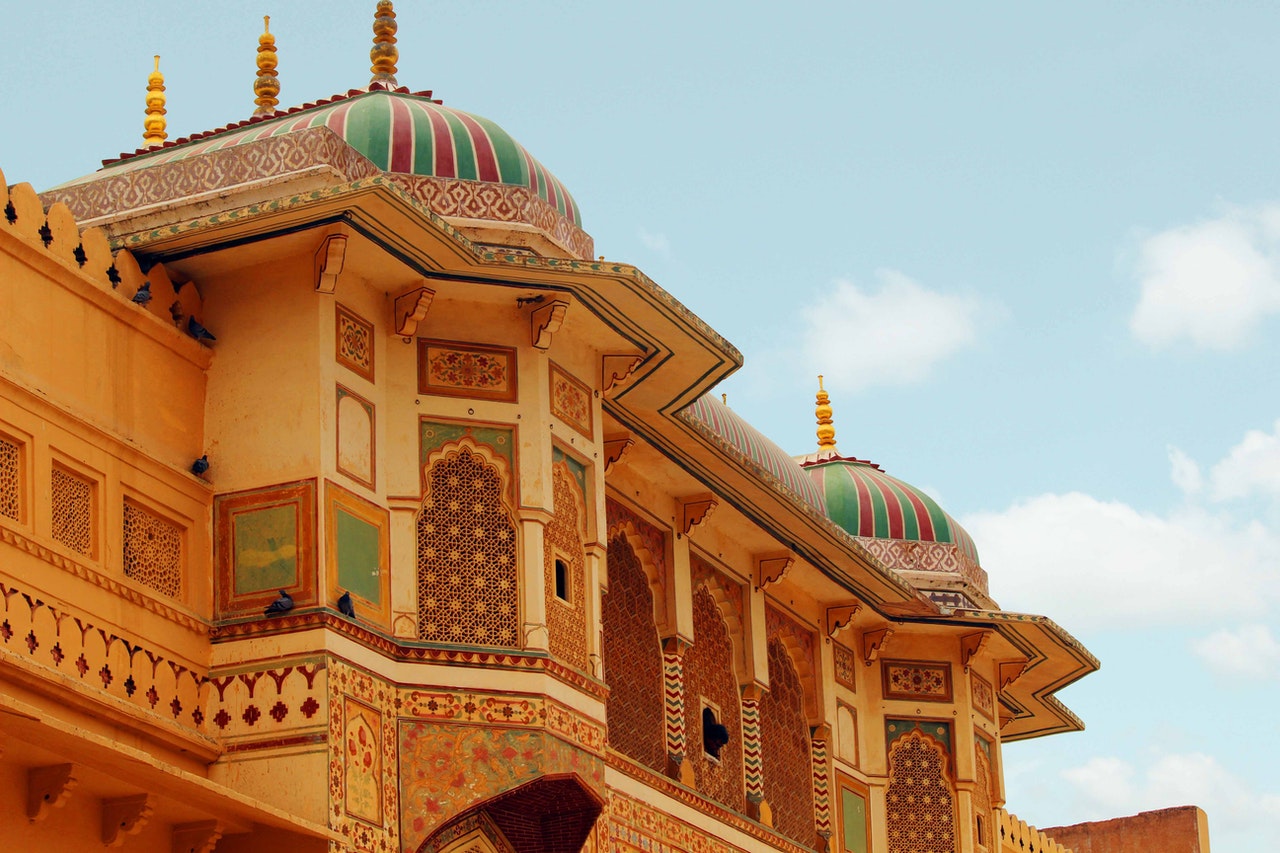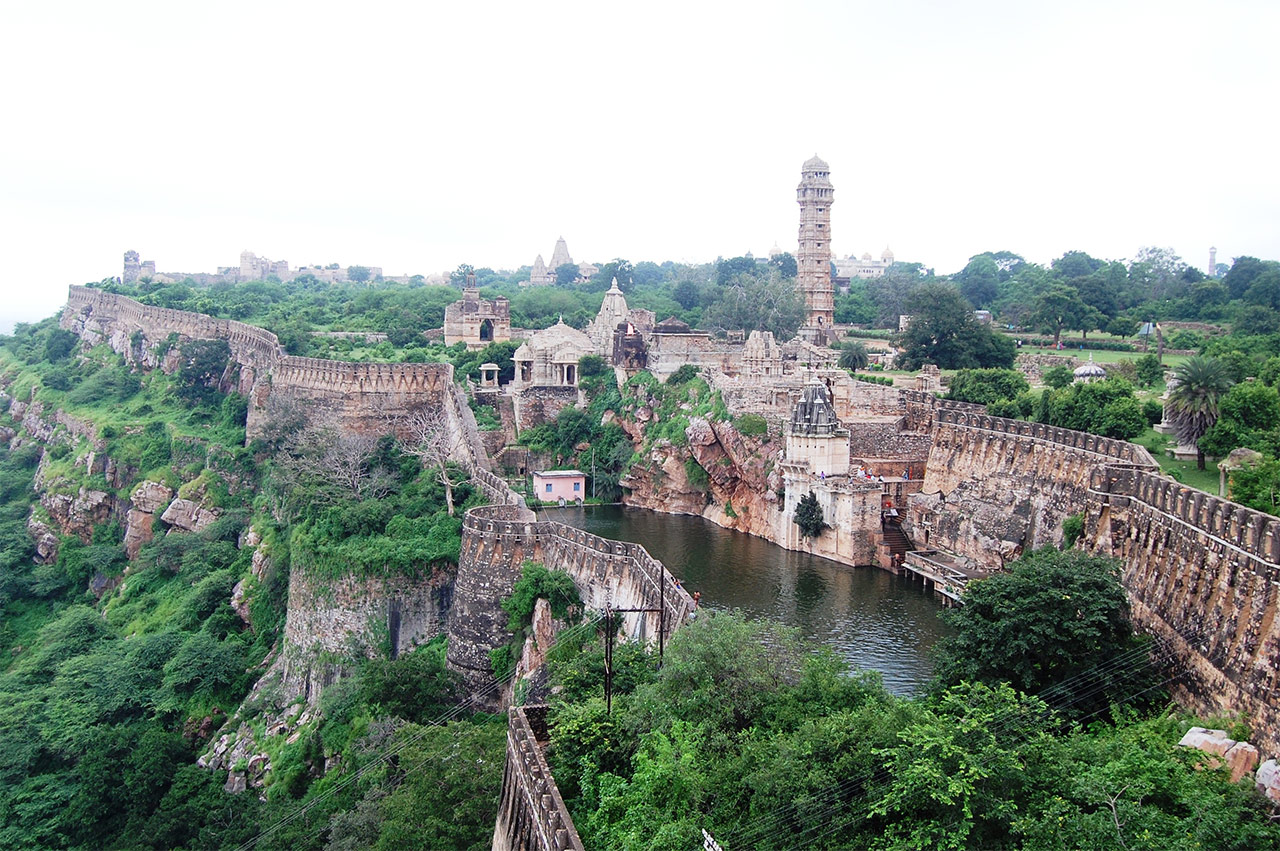
India has both a rich history and culture. The richness, however, is more about the correlation between people, cultures, and landscapes. With a multitude of influences, both that arose historically or originated within the land, to practices, architecture, and cultures that were brought from outside. India essentially is a wonderful mosaic of different traditions and heritages. One such is the Rajput community whose presence in the country reflects on countless stories, architectural magnificence, and a cultural mingling through various times.
History of Rajput Architecture

One often thinks of valor, courageous kingdoms, opulent architecture, and a dominant Hindu environment when one hears about Rajputs. However, Rajputs in fact, incorporate various clans though it was around the 16th century that it began to be understood as the way we see it today. The origin of Rajputs is not too clear, yet their emergence is often associated with the breakup of the Gupta Empire in the 6th century. They are regarded as Kshatriyas though people from different strata of society have been absorbed too. The term Rajput has been anachronistically used over the years. It was addressed for a social class of people that came from different traditions, economic, and ethnic backgrounds.
Yet, it was in the 7th century that Rajputs started attaining political importance. Rajput kingdoms and dynasties were spread across northern and western India and were the main obstacles in the way of Muslim attackers.
The membership into the class became largely hereditary during the 16th and 17th centuries. However, the Rajput dynasties and kingdoms played a huge role in consolidating the class and clan across different areas till the 20th century. The Rajputs population is mostly found in Rajasthan, Gujarat, Haryana, Uttar Pradesh, Punjab, Himachal Pradesh, Uttarakhand, Madhya Pradesh, Bihar, and Sindh.
Rajput kingdoms

Many parts of the subcontinent have been ruled by Rajput dynasties. Some as sovereign states, whereas later, many as princely states too.Since the term is anachronistically used, the rulers of Kalinjar and Gwalior who opposed the assaults by Mahmud Ghazni are also known as Rajputs. Some of the others include the Pratiharas, the Tomars, the Chahamanas, the Paramanas, the Chalukyas, the Chandelas and the Gahadavalas.
The Rajput kingdoms of Ranthambore and Chittor resisted the onset of Alauddin Khilji. Later Rana Sanga of Mewar defeated Delhi Sultanate’s Ibrahim Lodi but was, however, later defeated by Babur in the Battle of Khanwa. Many Rajput kingdoms moved along the eastern Ganga plains into modern-day Bihar and Uttar Pradesh.
Yet, the equation of the Rajputs and the Mughals was for most parts a seamless arrangement. Akbar made a settlement with almost all Rajput kingdoms, except Mewar. It was because of their support the Mughal Empire was able to strengthen its foundations. Rajputs were a part of the court, had governance and army commands too. The Mughal kings married Rajput princesses.
The alliance between the Mughals and Rajputs continued to flourish. Jahangir and Shah Jahan’s mothers were Rajputs. But the bond was maligned during Aurangzeb’s rule. The Rajputs revolted under him and became one of the many reasons for the downfall of the Mughal Empire. The Rajputs too fell at the hands of the Marathas and after Independence, many of the Rajputana states were merged to form Rajasthan.
Rajput Architecture

The Rajputs have immensely contributed to the historical and cultural landscape of the country. There are, of course, many contributions made by the community, however, one that stands out is Rajput architecture. The state of Rajasthan is ablaze with astounding architectural brilliance. But the architectural extravaganza is also seen in many other parts of the country.
Some of the temples built by Rajputs include the Rathas in Mahabalipuram and the temples at Ellora. The Pallava, Hoysala, and Chola temples, the Lingaraj Temple in Bhubaneshwar, Jagannath Temple at Puri, and the Khajuraho temples are also built by the Rajputs.
Fortified Forts

One of the most mesmerizing aspects of Rajput architecture has been the opulent palaces and fortifying forts. Let’s take a look at some of their best architectural marvels.
The Hill Forts are a great reflection of Rajput architecture. The forts at Chittor, Amer, Ranthambore, Jaisalmer, Gagron, and Kumbhalgarh are a part of the UNESCO World Heritage Sites. All these are built on hills with magnificent towers and secure walls. The Chittorgarh Fort is the largest in India and was the capital of Mewar. The Jaisalmer Fort is a ‘living fort’, with some of the city’s population still residing within its walls. Built by Rajput king Jaisal the huge yellow sandstone fort is also known as the Golden Fort or Sonar Qila.
The Ranthambore Fort lies within the Ranthambore National Park. It was held by Chauhans or the Chahamanas until the Delhi Sultanate took it over. The Amber Fort a few kilometers from Jaipur was built by Raja Man Singh. These forts are sprawling structures that house temples, palaces, halls, and exquisite interiors. Some of the forts include the Jaigarh Fort, Mehrangarh Fort built by Raja Jodha, Junagarh Fort, Lohagarh Fort, Alwar Fort, Bhangarh Fort to name a few.
The forts thus are in fact, the most important and striking architectural wonders of the Rajputs. The sense of security, protection from the enemy, safeguarding pride, and courage are some of the essential values that the Rajputs have carried with them over generations. These sentiments are perhaps, best manifested through their sturdy forts. That not only signify strength, but also strategy and good governance.
Palatial Palaces

The Rajput kings or Maharaj’s were true to their palatial lifestyle. Some of the best palaces are placed within the walls of forts, making the entire complex an exquisite site of strength and delicacy. The Amber Palace, for example, is one of the most beautiful palaces in Jaipur. Located within the Amber Fort, the palace has six different entrances and courtyards.
The City Palace built by Maharaja Sawai Jai Singh II in 1723 is in the heart of Jaipur. Again with many gateways of pol, halls that include the Diwan-e-Khas and Diwan-e – Aam. Along with a temple and now a museum the palace is a great showcase of royalty.
Jal Mahal situated in the middle of Man Sagar Lake is a palace that perhaps can’t get any better. Built by Maharaja Jai Singh II, the palace is five-storied sandstone with hallways, chhatris, and magnificent paintings. The Vinay Vilas Mahal in Alwar was built by Maharaja Vinay Singh. It is home to well-crafted windows, rooms, hallways, and facades. The Lalgarh Palace in Bikaner is an elegant testimony to the Indo-Saracenic architectural style. The Umaid Bhawan Palace in Jodhpur was built by Maharaja Umaid Singh and took almost 15 years to complete. With royal galleries and majestic automobiles, the palace is a heritage hotel too.
No list of palaces can be quite complete without the Hawa Mahal. Some of the other palaces include Rani Padmini’s Palace inside Chittorgarh Fort. The Deeg Palace, Juna Mahal, Chhattar Mahal in Bundi, Lalgarh Palace in Bikaner, and more. But Udaipur remains quite the place for palaces for sure. With a litany of astounding and stunning palaces, Udaipur is the destination for royalty, class, and majesty. Some of these include the City Palace, Lake Palace, Monsoon Palace, etc. Of course, most of the palaces have been converted to heritage hotels and resorts. Their grandeur is probably unmatched elsewhere.
Rajput Architectural style

There are a few architectural nuances that are special to Rajput buildings and structures. The Indo-Aryan style was common in northern India, whereas, the Dravidian style in southern India. However, the influence of Mughal architecture or perhaps the integration of Islamic and Hindu architecture is best seen in Rajput structures. The Islamic elements inspired by Mughal architecture, as well as the local cultural styles, meet together in the architecture of the Rajputs.
Havelis with pretty and intricate frescos and courtyards were trademark styles. Built-in the Shekhawait and Marwar areas. Jharokhas, the overhanging balconies which acted like screens are one of the most prominent architectural elements. The Rajput women were cognizant of purdah or keeping their distance from men. The screens allowed them to watch the proceedings without invading their privacy. Similarly, chhatris or pavilions that are dome-shaped were built on the cemeteries as cenotaph memorials. Some of the excellent cenotaphs are Bada Bagh in Jaisalmer, Ahar Cenotaphs, Jaswant Thada in Jodhpur, and more.
Another significant feature of the Rajput architecture is its step wells. A bawdi one can climb down the well-designed in intricate geometric patterns with fantastic scientific understanding. The step wells in Bundi are one of well-known architectural delight.
Rajput architecture also includes city or town planning. Several rulers built cities and the planning was well thought and practiced. Housed inside the forts, the cities have distinct structures and demarcated functions.
Conclusion
The Rajput community has been an essential part of the Indian narrative. Yet, its strongest character lies in its fluidity. Unlike a lot of other castes or classes, the Rajputs historically have integrated with all sections of society and allowed their community to grow both vertically and laterally. Its members were agriculturists, tribals, Kshatriyas, and more, all finding a way to come together to reinforce values of humanity, goodness, and valor. Though it did get to hereditary fortune. Nonetheless, the overall idea of equality, loyalty, and courage resonates through all Rajput architecture, culture, and of course, its tales.






I am very happy about you/your team have put lot of detail I don’t have word to say because I am very happy
Hey Shiva, thanks for reading 🙂